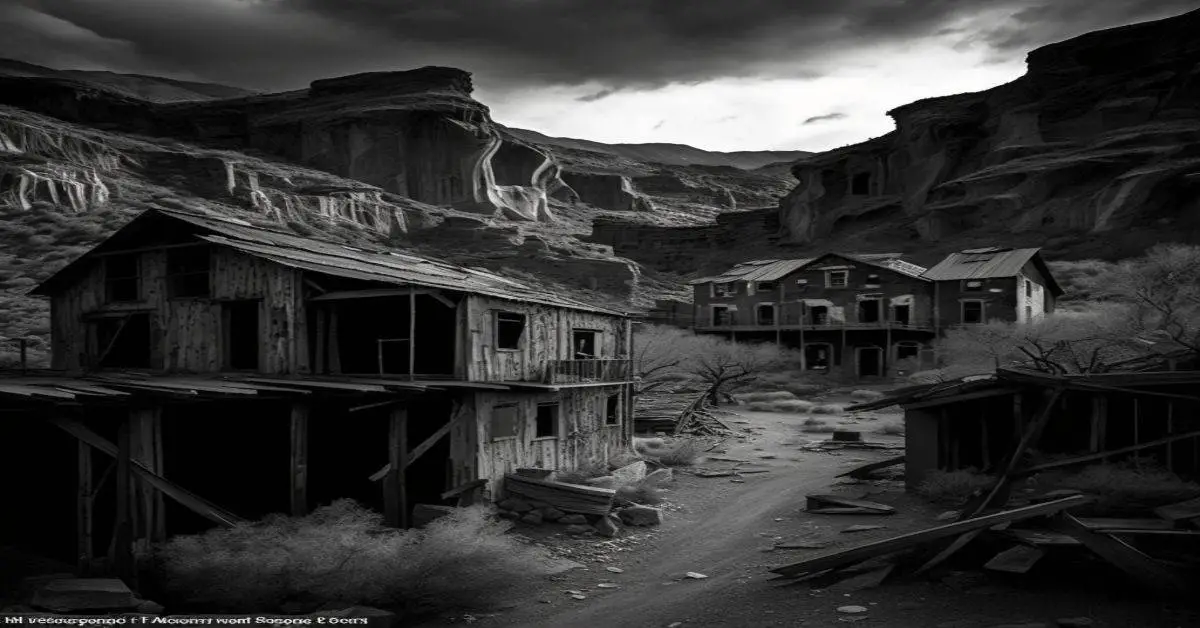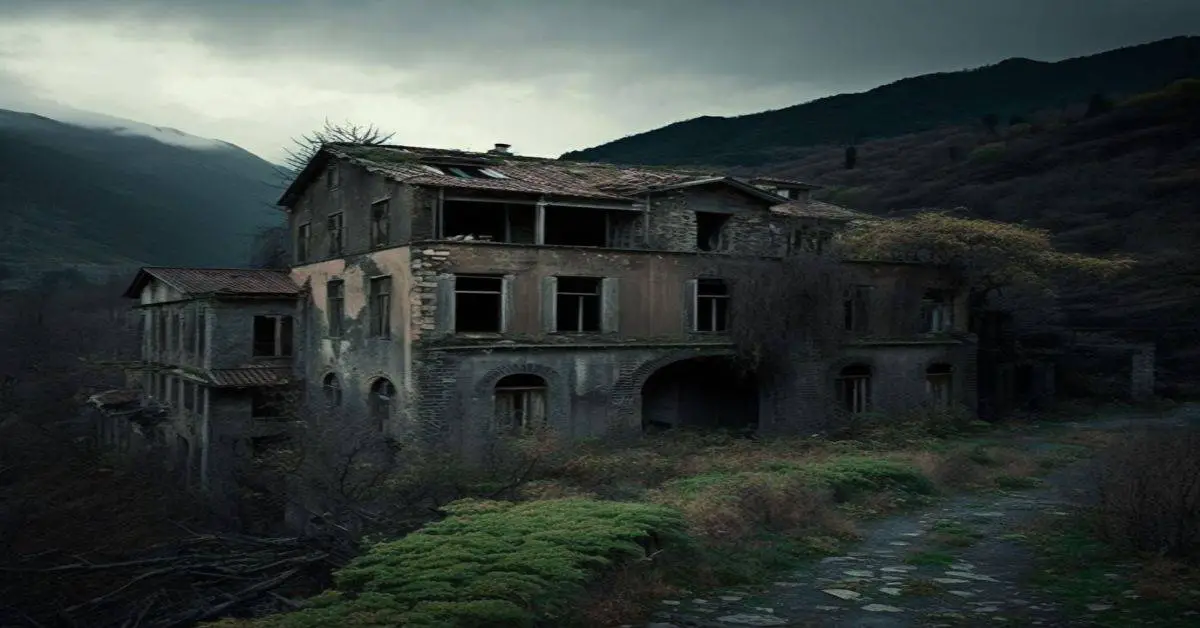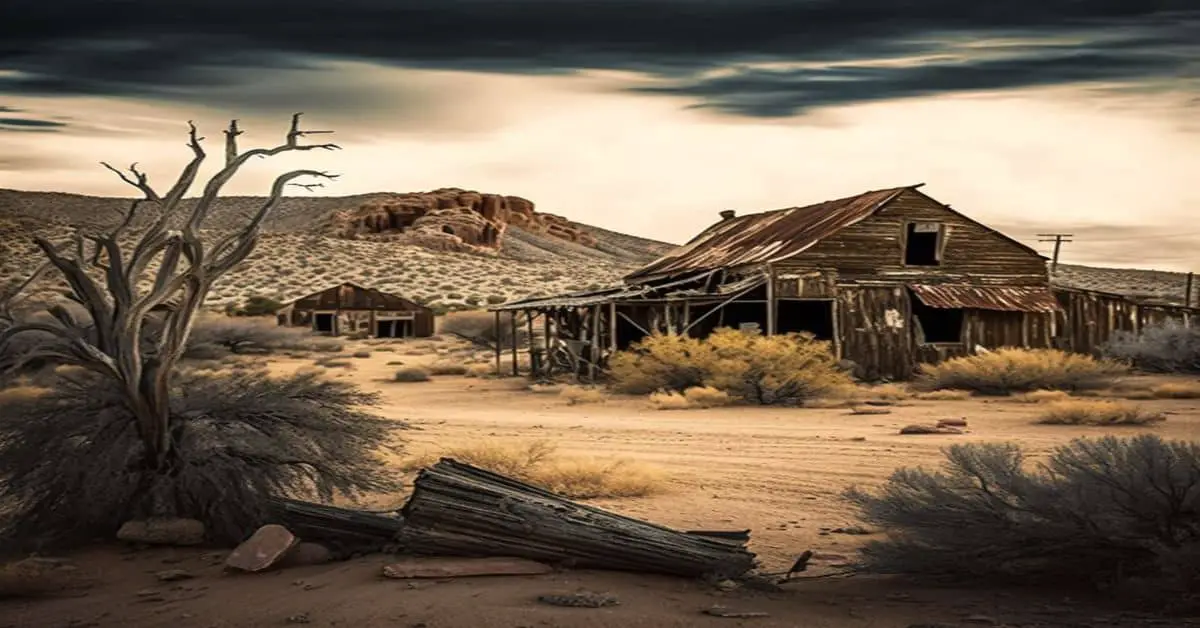Panamint City: The California Ghost Town Lost in Death Valley
Panamint City, a once-thriving silver and copper mining town, now stands as a well-preserved California ghost town hidden deep within the desolate landscape of Death Valley National Park.
Founded in the early 1870s, this remote settlement experienced a short-lived boom that attracted miners, outlaws, and settlers seeking fortune and adventure. Today, Panamint City’s eerie remnants of the past can only be reached by taking on a challenging 7.5-mile hike through Surprise Canyon.
This journey rewards hikers with a fascinating glimpse into the history of the Wild West.
The Early Days of Panamint City
Discovery of Silver and Copper
In 1872, a group of outlaws hiding from the law in the Panamint Mountains stumbled upon silver and copper deposits in the area. Recognizing the potential for a lucrative mining operation, they partnered with prospectors William L. Kennedy, Robert Stewart, and Richard C. Jacobs to stake their claims.
The discovery caught the attention of Nevada Senators John P. Jones and William M. Stewart, who were already heavily invested in silver mining in Nevada. They formed the Panamint Mining Company and began acquiring the area’s most significant mines, sparking a mining boom in the region.
Founding of the Town
The town of Panamint City was founded in 1873-74 to support the growing mining operations. Its population quickly grew to around 2,000 people, and the mile-long Main Street became lined with mills, saloons, stores, a red-light district, and even a newspaper called the Panamint News.
However, the town’s remote location in Surprise Canyon and its lawless reputation presented challenges for both the settlers and the mining operations.
Life in Panamint City
A Rugged and Lawless Mining Camp
Panamint City was notorious for its lawlessness, earning the title of the “toughest, rawest, most hard-boiled little hellhole that ever passed for a civilized town.” The town’s population consisted of miners, merchants, prostitutes, and outlaws, many of whom were attracted by the promise of fortune in the silver mines.
More than 50 shootings were reported during the town’s brief existence, and Wells Fargo refused to open an office there due to the town’s reputation. Despite the harsh conditions and danger, the town grew and thrived.
The Challenges of Living in Panamint City
The town’s remote location and harsh desert climate made life difficult for its residents. Water was scarce, and supplies had to be transported from long distances. The town’s elevation of 6,280 feet also made it susceptible to flash floods that could wash out roads and buildings.
Despite these challenges, the residents of Panamint City persevered, driven by the potential wealth that could be found in the mines.
The Boom and Bust of Panamint City
The Silver Boom
Senators Jones and Stewart’s investments and the rumors of rich silver deposits drew hundreds of prospectors to the Panamint Mountains. The town’s population swelled, and new businesses and establishments popped up to cater to the miners’ needs.
At its peak in 1874, Panamint City boasted a population of 2,000 people and a bustling Main Street filled with saloons, stores, a bank, a brewery, and more.
The Decline and Abandonment
Unfortunately, the silver boom in Panamint City was short-lived. By 1875, it became apparent that the silver deposits in the area were not as extensive as initially thought, and the town’s population began to dwindle. In 1876, a flash flood destroyed much of the town, and many residents left for other mining towns.
Over the years, mining operations continued on a sporadic basis, and the town experienced several brief revivals. The post office operated intermittently from 1874 to 1895, and mining in the area persisted until 1983. However, the glory days of Panamint City were over, and the town was eventually abandoned.
Accessing Panamint City Today
The Hike to Panamint City
To explore the remains of Panamint City, visitors must embark on a challenging 7.5-mile hike through Surprise Canyon. The trail starts at the Chris Wicht Camp, located six miles northeast of the ghost town of Ballarat.
The hike is rated as difficult, with a 3,600-foot elevation gain and numerous obstacles along the way, including rock scrambles, waterfalls, thick brush, and creek crossings. Despite the challenges, the hike offers stunning views of the canyon’s lush greenery and white stone walls.
Exploring the Ghost Town
Upon reaching Panamint City, visitors will find a well-preserved ghost town with numerous buildings and mining structures still standing. The town’s most prominent remnant is the large smokestack of the Surprise Valley Mill and Water Company, built in 1875.
Other structures include the Panamint Hilton, a dilapidated cabin with running water and glass windows, and several other cabins in various states of disrepair. Numerous mining ruins also exist, including the remains of mills, mines, and equipment.
The Legacy of Panamint City
Panamint City serves as a haunting reminder of the Wild West’s mining boom and the harsh conditions those who sought their fortune in the desert face. Despite its remote location and difficult access, the town’s well-preserved ruins continue to attract adventurous hikers seeking a glimpse into the past.
Today, Panamint City and much of Surprise Canyon are part of Death Valley National Park, ensuring their protection and preservation for future generations to explore and appreciate.
If you’re up for the challenge, the hike to this California ghost town is an unforgettable experience that offers a fascinating look into the history and resilience of those who once called Panamint City home.




